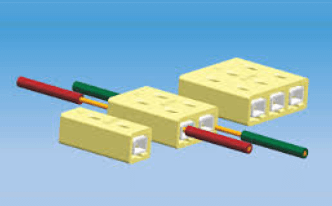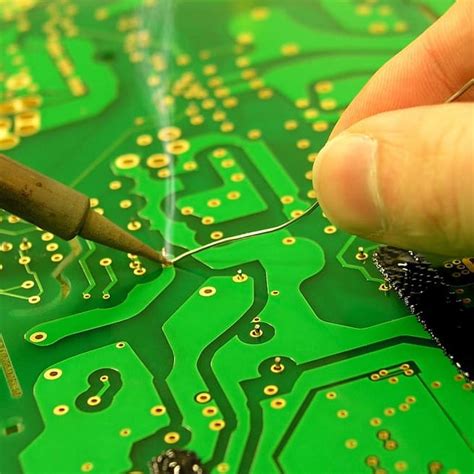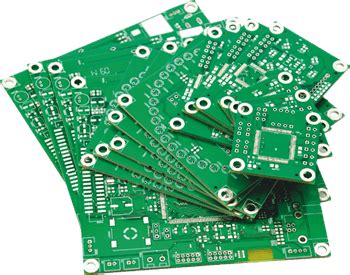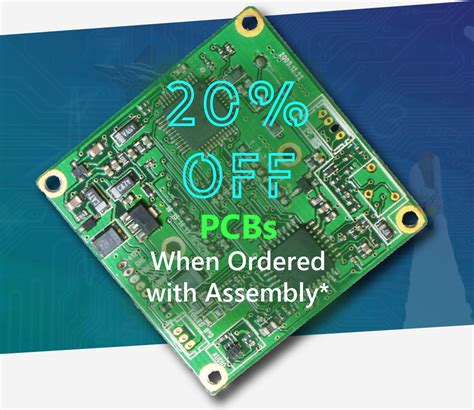Flex pcb connector
Advantages Of Using Flex PCB Connectors In Modern Electronics
Flex PCB connectors, or flexible printed circuit board connectors, have become increasingly integral in the design and functionality of modern electronic devices. As technology continues to evolve, the demand for more compact, efficient, and reliable electronic components has driven the adoption of these connectors across various industries.
One of the primary advantages of using flex PCB connectors is their ability to accommodate complex and compact designs.
Unlike traditional rigid PCBs, flex PCBs can be bent, twisted, and folded into various shapes, allowing for greater design flexibility. This adaptability is particularly beneficial in applications where space is limited, such as in smartphones, wearable devices, and medical equipment. By enabling more intricate designs, flex PCB connectors contribute to the miniaturization of electronic devices, a trend that is increasingly prevalent in today’s market.
In addition to their design flexibility, flex PCB connectors offer enhanced durability and reliability.
The materials used in these connectors are typically more resilient to environmental stressors, such as vibration, shock, and temperature fluctuations. This robustness ensures that the electronic devices can withstand harsh conditions without compromising performance. Consequently, industries such as automotive, aerospace, and military, where reliability is paramount, have increasingly turned to flex PCB connectors to meet their stringent requirements. Furthermore, the inherent flexibility of these connectors reduces the risk of mechanical failure, as they can absorb and distribute mechanical stress more effectively than their rigid counterparts.
Another significant advantage of flex PCB connectors is their potential for cost savings in both manufacturing and assembly processes.
The ability to integrate multiple components into a single flex PCB reduces the need for additional connectors and cables, thereby simplifying the assembly process and reducing material costs. Moreover, the streamlined design can lead to faster production times and lower labor costs, as fewer steps are required to assemble the final product. This efficiency is particularly advantageous in high-volume production environments, where time and cost savings can have a substantial impact on overall profitability.
Flex PCB connectors also contribute to improved electrical performance.
The shorter and more direct routing of electrical signals in flex PCBs minimizes the potential for signal loss and interference, resulting in better overall performance. This characteristic is especially important in high-frequency applications, where maintaining signal integrity is crucial. Additionally, the reduced number of interconnections in flex PCBs decreases the likelihood of connectivity issues, further enhancing the reliability of the electronic device.
Moreover, the environmental benefits of using flex PCB connectors should not be overlooked.
The reduction in material usage and waste during the manufacturing process aligns with the growing emphasis on sustainability in the electronics industry. By minimizing the environmental footprint of electronic devices, manufacturers can contribute to a more sustainable future while meeting consumer demand for eco-friendly products.
In conclusion, the advantages of using flex PCB connectors in modern electronics are manifold. Their design flexibility, durability, cost-effectiveness, and superior electrical performance make them an attractive choice for a wide range of applications. As the demand for smaller, more efficient, and reliable electronic devices continues to grow, the role of flex PCB connectors is likely to become even more prominent. By embracing this technology, manufacturers can not only enhance the performance and reliability of their products but also contribute to a more sustainable and innovative future in the electronics industry.
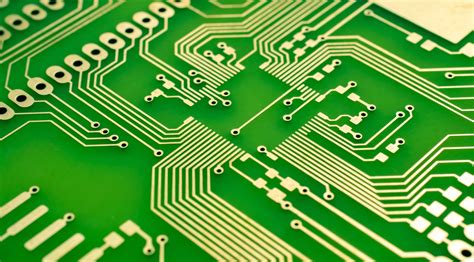
Design Considerations For Flex PCB Connectors
When designing flex PCB connectors, several critical considerations must be taken into account to ensure optimal performance and reliability. Flex PCB connectors, known for their ability to accommodate complex geometries and dynamic applications, are increasingly utilized in various industries, including consumer electronics, automotive, and medical devices. As these connectors are integral to the functionality of flexible printed circuit boards, understanding the nuances of their design is essential.
To begin with, material selection plays a pivotal role in the design of flex PCB connectors.
The choice of materials impacts not only the mechanical properties but also the electrical performance of the connectors. Polyimide is commonly used due to its excellent thermal stability and flexibility, which are crucial for applications that involve bending and twisting. Additionally, the conductive materials, typically copper, must be chosen with care to ensure adequate conductivity while maintaining flexibility. The thickness of the copper layer is another important factor, as it influences both the current-carrying capacity and the overall flexibility of the connector.
Moreover, the design of the connector must account for the specific environmental conditions it will encounter.
For instance, in automotive applications, connectors may be exposed to extreme temperatures and vibrations. Therefore, it is essential to incorporate features that enhance durability, such as strain reliefs and robust solder joints. In contrast, connectors used in medical devices may require biocompatibility and resistance to sterilization processes. Thus, understanding the operational environment is crucial for selecting appropriate design features and materials.
Transitioning to the electrical considerations, impedance control is a key aspect of flex PCB connector design.
As electronic devices become more sophisticated, maintaining signal integrity is paramount. This requires careful attention to the layout of the traces and the spacing between them. Controlled impedance ensures that signals are transmitted with minimal distortion, which is particularly important in high-frequency applications. Additionally, minimizing crosstalk and electromagnetic interference (EMI) is essential to prevent signal degradation. This can be achieved through strategic placement of ground planes and the use of shielding techniques.
Furthermore, the mechanical design of flex PCB connectors must be meticulously planned to accommodate the intended movement and flexing.
The bend radius, for example, should be optimized to prevent mechanical stress that could lead to failure. It is advisable to follow industry guidelines and standards to determine the minimum bend radius for specific materials and thicknesses. Additionally, the use of stiffeners can provide support in areas that require additional rigidity, thereby enhancing the overall mechanical stability of the connector.
In addition to these considerations, manufacturability is a critical aspect that should not be overlooked.
The design must be compatible with existing manufacturing processes to ensure cost-effectiveness and scalability. This involves collaborating with manufacturers early in the design phase to address potential challenges and incorporate design for manufacturability (DFM) principles. By doing so, designers can avoid costly redesigns and ensure a smooth transition from prototype to production.
In conclusion, designing flex PCB connectors requires a comprehensive understanding of both the electrical and mechanical requirements specific to the application.
By carefully considering material selection, environmental conditions, electrical performance, mechanical design, and manufacturability, designers can create connectors that meet the demands of modern electronic devices. As technology continues to evolve, staying informed about the latest advancements and best practices in flex PCB connector design will be essential for achieving success in this dynamic field.
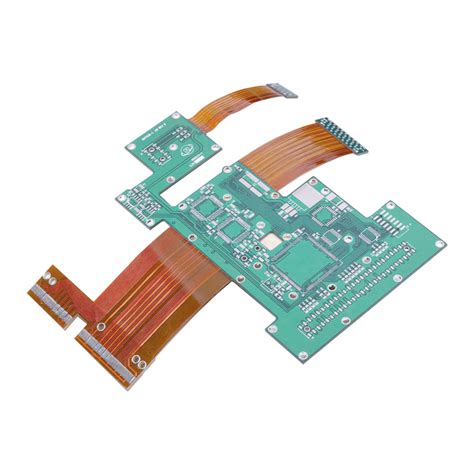
Common Applications Of Flex PCB Connectors In Industry
Flex PCB connectors, or flexible printed circuit board connectors, have become integral components in various industries due to their versatility and adaptability. These connectors are designed to connect flexible circuits to rigid boards, providing a seamless interface that accommodates the dynamic requirements of modern electronic devices. As industries continue to evolve, the demand for compact, reliable, and efficient electronic components has surged, making flex PCB connectors indispensable in numerous applications.
One of the most prominent industries utilizing flex PCB connectors is the consumer electronics sector.
In this fast-paced industry, the need for miniaturization and enhanced functionality is paramount. Flex PCB connectors are ideal for smartphones, tablets, and wearable devices, where space is at a premium. Their ability to bend and conform to tight spaces without compromising performance allows manufacturers to design sleeker and more compact devices. Moreover, these connectors contribute to the overall durability of consumer electronics by providing robust connections that can withstand repeated flexing and bending.
Transitioning to the automotive industry, flex PCB connectors play a crucial role in the development of modern vehicles.
As cars become increasingly sophisticated with advanced infotainment systems, navigation units, and driver assistance technologies, the demand for reliable and flexible connections has grown. Flex PCB connectors are used extensively in automotive applications to connect various electronic components, such as sensors, displays, and control units. Their ability to endure harsh environmental conditions, including temperature fluctuations and vibrations, makes them particularly suited for automotive use. Furthermore, as the industry moves towards electric and autonomous vehicles, the need for efficient and lightweight electronic systems will only increase, further solidifying the importance of flex PCB connectors.
In the realm of medical devices, flex PCB connectors are equally vital.
The medical industry demands high precision and reliability, and these connectors meet these requirements by offering stable and secure connections in compact form factors. They are commonly found in diagnostic equipment, such as MRI machines and ultrasound devices, where they facilitate the transmission of critical data. Additionally, in wearable medical devices, which monitor vital signs and other health metrics, flex PCB connectors enable the creation of lightweight and comfortable products that patients can wear for extended periods.
The aerospace industry also benefits significantly from the use of flex PCB connectors.
In this field, where weight reduction and reliability are critical, these connectors provide a solution that meets stringent industry standards. They are used in various applications, including satellite systems, avionics, and communication equipment. The ability of flex PCB connectors to maintain performance under extreme conditions, such as high altitudes and intense vibrations, makes them an ideal choice for aerospace applications.
Lastly, the industrial sector leverages flex PCB connectors in automation and control systems.
As factories and production lines become more automated, the need for reliable and flexible connections between sensors, actuators, and control units becomes essential. Flex PCB connectors offer the necessary flexibility and durability to support these complex systems, ensuring seamless operation and minimal downtime.
In conclusion, flex PCB connectors have become a cornerstone in various industries due to their adaptability, reliability, and efficiency. From consumer electronics to automotive, medical, aerospace, and industrial applications, these connectors provide the necessary connections that drive innovation and technological advancement. As industries continue to push the boundaries of what is possible, the role of flex PCB connectors will undoubtedly expand, further cementing their importance in the modern technological landscape.
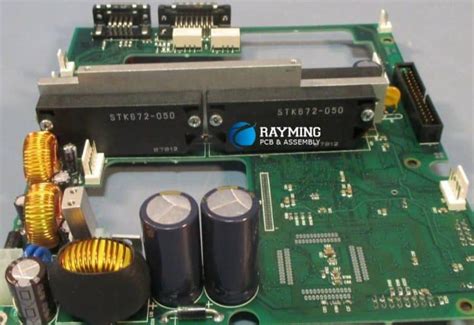
Innovations In Flex PCB Connector Technology
Flex PCB connectors have emerged as a pivotal component in the realm of modern electronics, offering a versatile solution to the ever-evolving demands of technology. As electronic devices continue to shrink in size while expanding in functionality, the need for reliable, efficient, and adaptable connectors has never been more critical. Flex PCB connectors, with their unique ability to bend and conform to various shapes, provide an ideal solution for these challenges, enabling the seamless integration of complex electronic systems.
One of the most significant innovations in flex PCB connector technology is the development of materials that enhance flexibility and durability.
Traditional rigid connectors often face limitations in applications requiring dynamic movement or compact spaces. However, advancements in materials science have led to the creation of connectors that maintain electrical integrity while being subjected to repeated bending and flexing. These materials not only improve the lifespan of the connectors but also ensure consistent performance in demanding environments, such as automotive and aerospace applications.
Moreover, the miniaturization of electronic components has driven the need for connectors that can accommodate high-density interconnections.
Flex PCB connectors have risen to this challenge by offering solutions that support a greater number of connections within a smaller footprint. This capability is particularly beneficial in consumer electronics, where space is at a premium, and the demand for multifunctional devices continues to grow. By enabling more connections in a compact form, flex PCB connectors contribute to the development of sleeker, more efficient devices.
In addition to material and size innovations, the integration of advanced manufacturing techniques has played a crucial role in the evolution of flex PCB connectors.
Techniques such as laser direct structuring (LDS) and additive manufacturing have allowed for greater precision and customization in connector design. These methods enable the production of complex geometries and intricate patterns that were previously unattainable with conventional manufacturing processes. As a result, designers can now create connectors tailored to specific applications, enhancing both performance and reliability.
Furthermore, the push towards sustainability in electronics has influenced the development of eco-friendly flex PCB connectors.
Manufacturers are increasingly adopting environmentally conscious practices, such as using recyclable materials and reducing waste during production. This shift not only aligns with global sustainability goals but also meets the growing consumer demand for greener products. By prioritizing eco-friendly innovations, the flex PCB connector industry is contributing to a more sustainable future for electronics.
The integration of smart technologies into flex PCB connectors represents another exciting frontier.
As the Internet of Things (IoT) continues to expand, the need for connectors that can support data transmission and communication is paramount. Flex PCB connectors are being designed with embedded sensors and wireless capabilities, allowing them to facilitate real-time data exchange and monitoring. This advancement opens up new possibilities for applications in healthcare, industrial automation, and smart home devices, where connectivity and data-driven insights are essential.
In conclusion, the innovations in flex PCB connector technology are driving significant advancements across various industries. Through the development of flexible materials, miniaturization, advanced manufacturing techniques, sustainability efforts, and smart integration, these connectors are meeting the complex demands of modern electronics. As technology continues to evolve, flex PCB connectors will undoubtedly play a crucial role in shaping the future of electronic design and functionality, offering solutions that are both innovative and adaptable.
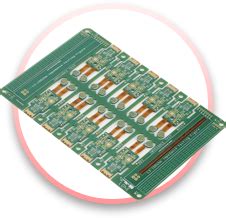
Advantages Of Using Flex PCB Connectors In Modern Electronics
Flex PCB connectors, or flexible printed circuit board connectors, have become increasingly integral in the design and functionality of modern electronic devices. As technology continues to evolve, the demand for more compact, efficient, and reliable electronic components has driven the adoption of these connectors across various industries.
One of the primary advantages of using flex PCB connectors is their ability to accommodate complex and compact designs
. Unlike traditional rigid PCBs, flex PCBs can be bent, twisted, and folded into various shapes, allowing for greater design flexibility. This adaptability is particularly beneficial in applications where space is limited, such as in smartphones, wearable devices, and medical equipment. By enabling more intricate designs, flex PCB connectors contribute to the miniaturization of electronic devices, a trend that is increasingly prevalent in today’s market.
In addition to their design flexibility, flex PCB connectors offer enhanced durability and reliability.
The materials used in these connectors are typically more resilient to environmental stressors, such as vibration, shock, and temperature fluctuations. This robustness ensures that the electronic devices can withstand harsh conditions without compromising performance. Consequently, industries such as automotive, aerospace, and military, where reliability is paramount, have increasingly turned to flex PCB connectors to meet their stringent requirements. Furthermore, the inherent flexibility of these connectors reduces the risk of mechanical failure, as they can absorb and distribute mechanical stress more effectively than their rigid counterparts.
Another significant advantage of flex PCB connectors is their potential for cost savings in both manufacturing and assembly processes.
The ability to integrate multiple components into a single flex PCB reduces the need for additional connectors and cables, thereby simplifying the assembly process and reducing material costs. Moreover, the streamlined design can lead to faster production times and lower labor costs, as fewer steps are required to assemble the final product. This efficiency is particularly advantageous in high-volume production environments, where time and cost savings can have a substantial impact on overall profitability.
Flex PCB connectors also contribute to improved electrical performance.
The shorter and more direct routing of electrical signals in flex PCBs minimizes the potential for signal loss and interference, resulting in better overall performance. This characteristic is especially important in high-frequency applications, where maintaining signal integrity is crucial. Additionally, the reduced number of interconnections in flex PCBs decreases the likelihood of connectivity issues, further enhancing the reliability of the electronic device.
Moreover, the environmental benefits of using flex PCB connectors should not be overlooked.
The reduction in material usage and waste during the manufacturing process aligns with the growing emphasis on sustainability in the electronics industry. By minimizing the environmental footprint of electronic devices, manufacturers can contribute to a more sustainable future while meeting consumer demand for eco-friendly products.
In conclusion, the advantages of using flex PCB connectors in modern electronics are manifold. Their design flexibility, durability, cost-effectiveness, and superior electrical performance make them an attractive choice for a wide range of applications. As the demand for smaller, more efficient, and reliable electronic devices continues to grow, the role of flex PCB connectors is likely to become even more prominent. By embracing this technology, manufacturers can not only enhance the performance and reliability of their products but also contribute to a more sustainable and innovative future in the electronics industry.

Design Considerations For Flex PCB Connectors
When designing flex PCB connectors, several critical considerations must be taken into account to ensure optimal performance and reliability. Flex PCB connectors, known for their ability to accommodate complex geometries and dynamic applications, are increasingly utilized in various industries, including consumer electronics, automotive, and medical devices. As these connectors are integral to the functionality of flexible printed circuit boards, understanding the nuances of their design is essential.
To begin with, material selection plays a pivotal role in the design of flex PCB connectors.
The choice of materials impacts not only the mechanical properties but also the electrical performance of the connectors. Polyimide is commonly used due to its excellent thermal stability and flexibility, which are crucial for applications that involve bending and twisting. Additionally, the conductive materials, typically copper, must be chosen with care to ensure adequate conductivity while maintaining flexibility. The thickness of the copper layer is another important factor, as it influences both the current-carrying capacity and the overall flexibility of the connector.
Moreover, the design of the connector must account for the specific environmental conditions it will encounter
. For instance, in automotive applications, connectors may be exposed to extreme temperatures and vibrations. Therefore, it is essential to incorporate features that enhance durability, such as strain reliefs and robust solder joints. In contrast, connectors used in medical devices may require biocompatibility and resistance to sterilization processes. Thus, understanding the operational environment is crucial for selecting appropriate design features and materials.
Transitioning to the electrical considerations, impedance control is a key aspect of flex PCB connector design.
As electronic devices become more sophisticated, maintaining signal integrity is paramount. This requires careful attention to the layout of the traces and the spacing between them. Controlled impedance ensures that signals are transmitted with minimal distortion, which is particularly important in high-frequency applications. Additionally, minimizing crosstalk and electromagnetic interference (EMI) is essential to prevent signal degradation. This can be achieved through strategic placement of ground planes and the use of shielding techniques.
Furthermore, the mechanical design of flex PCB connectors must be meticulously planned to accommodate the intended movement and flexing.
The bend radius, for example, should be optimized to prevent mechanical stress that could lead to failure. It is advisable to follow industry guidelines and standards to determine the minimum bend radius for specific materials and thicknesses. Additionally, the use of stiffeners can provide support in areas that require additional rigidity, thereby enhancing the overall mechanical stability of the connector.
In addition to these considerations, manufacturability is a critical aspect that should not be overlooked.
The design must be compatible with existing manufacturing processes to ensure cost-effectiveness and scalability. This involves collaborating with manufacturers early in the design phase to address potential challenges and incorporate design for manufacturability (DFM) principles. By doing so, designers can avoid costly redesigns and ensure a smooth transition from prototype to production.
In conclusion, designing flex PCB connectors requires a comprehensive understanding of both the electrical and mechanical requirements specific to the application.
By carefully considering material selection, environmental conditions, electrical performance, mechanical design, and manufacturability, designers can create connectors that meet the demands of modern electronic devices. As technology continues to evolve, staying informed about the latest advancements and best practices in flex PCB connector design will be essential for achieving success in this dynamic field.

Common Applications Of Flex PCB Connectors In Industry
Flex PCB connectors, or flexible printed circuit board connectors, have become integral components in various industries due to their versatility and adaptability. These connectors are designed to connect flexible circuits to rigid boards, providing a seamless interface that accommodates the dynamic requirements of modern electronic devices. As industries continue to evolve, the demand for compact, reliable, and efficient electronic components has surged, making flex PCB connectors indispensable in numerous applications.
One of the most prominent industries utilizing flex PCB connectors is the consumer electronics sector.
In this fast-paced industry, the need for miniaturization and enhanced functionality is paramount. Flex PCB connectors are ideal for smartphones, tablets, and wearable devices, where space is at a premium. Their ability to bend and conform to tight spaces without compromising performance allows manufacturers to design sleeker and more compact devices. Moreover, these connectors contribute to the overall durability of consumer electronics by providing robust connections that can withstand repeated flexing and bending.
Transitioning to the automotive industry, flex PCB connectors play a crucial role in the development of modern vehicles.
As cars become increasingly sophisticated with advanced infotainment systems, navigation units, and driver assistance technologies, the demand for reliable and flexible connections has grown. Flex PCB connectors are used extensively in automotive applications to connect various electronic components, such as sensors, displays, and control units. Their ability to endure harsh environmental conditions, including temperature fluctuations and vibrations, makes them particularly suited for automotive use. Furthermore, as the industry moves towards electric and autonomous vehicles, the need for efficient and lightweight electronic systems will only increase, further solidifying the importance of flex PCB connectors.
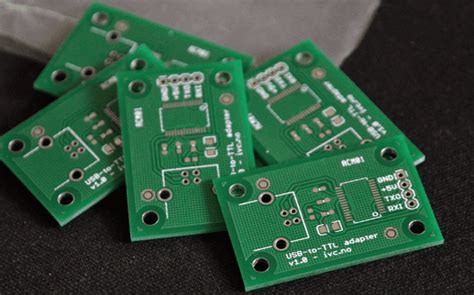
In the realm of medical devices, flex PCB connectors are equally vital.
The medical industry demands high precision and reliability, and these connectors meet these requirements by offering stable and secure connections in compact form factors. They are commonly found in diagnostic equipment, such as MRI machines and ultrasound devices, where they facilitate the transmission of critical data. Additionally, in wearable medical devices, which monitor vital signs and other health metrics, flex PCB connectors enable the creation of lightweight and comfortable products that patients can wear for extended periods.
The aerospace industry also benefits significantly from the use of flex PCB connectors.
In this field, where weight reduction and reliability are critical, these connectors provide a solution that meets stringent industry standards. They are used in various applications, including satellite systems, avionics, and communication equipment. The ability of flex PCB connectors to maintain performance under extreme conditions, such as high altitudes and intense vibrations, makes them an ideal choice for aerospace applications.
Lastly, the industrial sector leverages flex PCB connectors in automation and control systems.
As factories and production lines become more automated, the need for reliable and flexible connections between sensors, actuators, and control units becomes essential. Flex PCB connectors offer the necessary flexibility and durability to support these complex systems, ensuring seamless operation and minimal downtime.
In conclusion, flex PCB connectors have become a cornerstone in various industries due to their adaptability, reliability, and efficiency. From consumer electronics to automotive, medical, aerospace, and industrial applications, these connectors provide the necessary connections that drive innovation and technological advancement. As industries continue to push the boundaries of what is possible, the role of flex PCB connectors will undoubtedly expand, further cementing their importance in the modern technological landscape.

Innovations In Flex PCB Connector Technology
Flex PCB connectors have emerged as a pivotal component in the realm of modern electronics, offering a versatile solution to the ever-evolving demands of technology. As electronic devices continue to shrink in size while expanding in functionality, the need for reliable, efficient, and adaptable connectors has never been more critical. Flex PCB connectors, with their unique ability to bend and conform to various shapes, provide an ideal solution for these challenges, enabling the seamless integration of complex electronic systems.
One of the most significant innovations in flex PCB connector technology is the development of materials that enhance flexibility and durability.
Traditional rigid connectors often face limitations in applications requiring dynamic movement or compact spaces. However, advancements in materials science have led to the creation of connectors that maintain electrical integrity while being subjected to repeated bending and flexing. These materials not only improve the lifespan of the connectors but also ensure consistent performance in demanding environments, such as automotive and aerospace applications.
Moreover, the miniaturization of electronic components has driven the need for connectors that can accommodate high-density interconnections.
Flex PCB connectors have risen to this challenge by offering solutions that support a greater number of connections within a smaller footprint. This capability is particularly beneficial in consumer electronics, where space is at a premium, and the demand for multifunctional devices continues to grow. By enabling more connections in a compact form, flex PCB connectors contribute to the development of sleeker, more efficient devices.
In addition to material and size innovations, the integration of advanced manufacturing techniques has played a crucial role in the evolution of flex PCB connectors.
Techniques such as laser direct structuring (LDS) and additive manufacturing have allowed for greater precision and customization in connector design. These methods enable the production of complex geometries and intricate patterns that were previously unattainable with conventional manufacturing processes. As a result, designers can now create connectors tailored to specific applications, enhancing both performance and reliability.
Furthermore, the push towards sustainability in electronics has influenced the development of eco-friendly flex PCB connectors.
Manufacturers are increasingly adopting environmentally conscious practices, such as using recyclable materials and reducing waste during production. This shift not only aligns with global sustainability goals but also meets the growing consumer demand for greener products. By prioritizing eco-friendly innovations, the flex PCB connector industry is contributing to a more sustainable future for electronics.
The integration of smart technologies into flex PCB connectors represents another exciting frontier.
As the Internet of Things (IoT) continues to expand, the need for connectors that can support data transmission and communication is paramount. Flex PCB connectors are being designed with embedded sensors and wireless capabilities, allowing them to facilitate real-time data exchange and monitoring. This advancement opens up new possibilities for applications in healthcare, industrial automation, and smart home devices, where connectivity and data-driven insights are essential.
In conclusion, the innovations in flex PCB connector technology are driving significant advancements across various industries.
Through the development of flexible materials, miniaturization, advanced manufacturing techniques, sustainability efforts, and smart integration, these connectors are meeting the complex demands of modern electronics. As technology continues to evolve, flex PCB connectors will undoubtedly play a crucial role in shaping the future of electronic design and functionality, offering solutions that are both innovative and adaptable.


